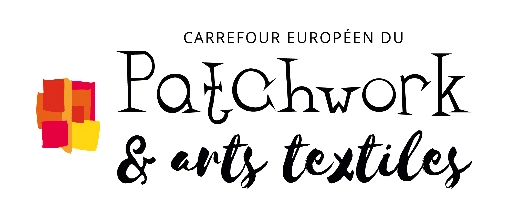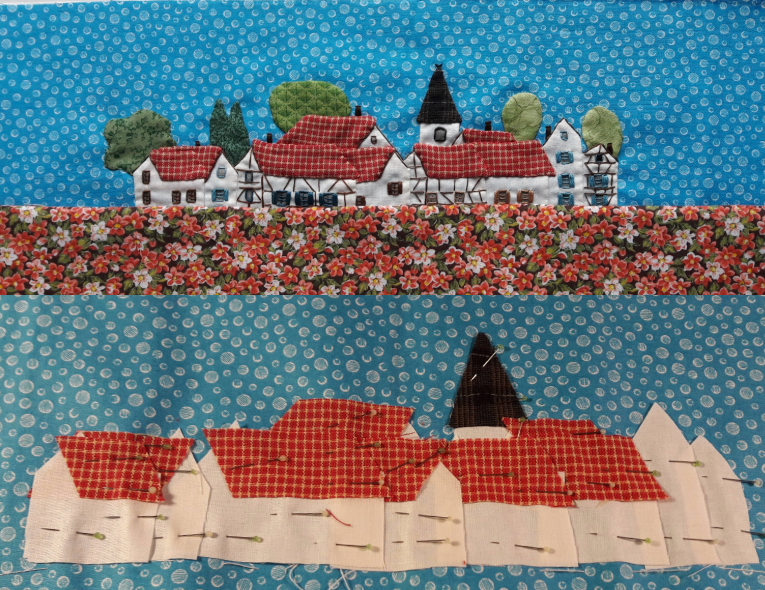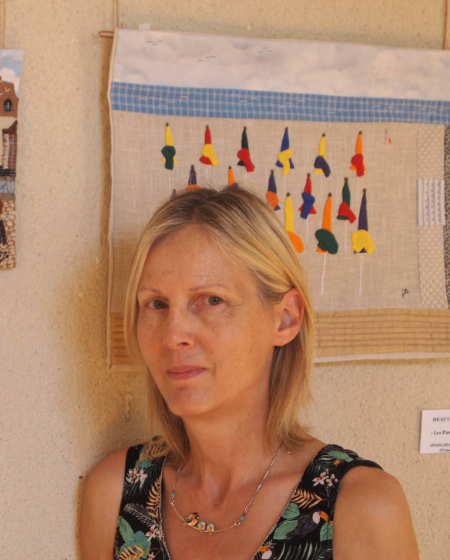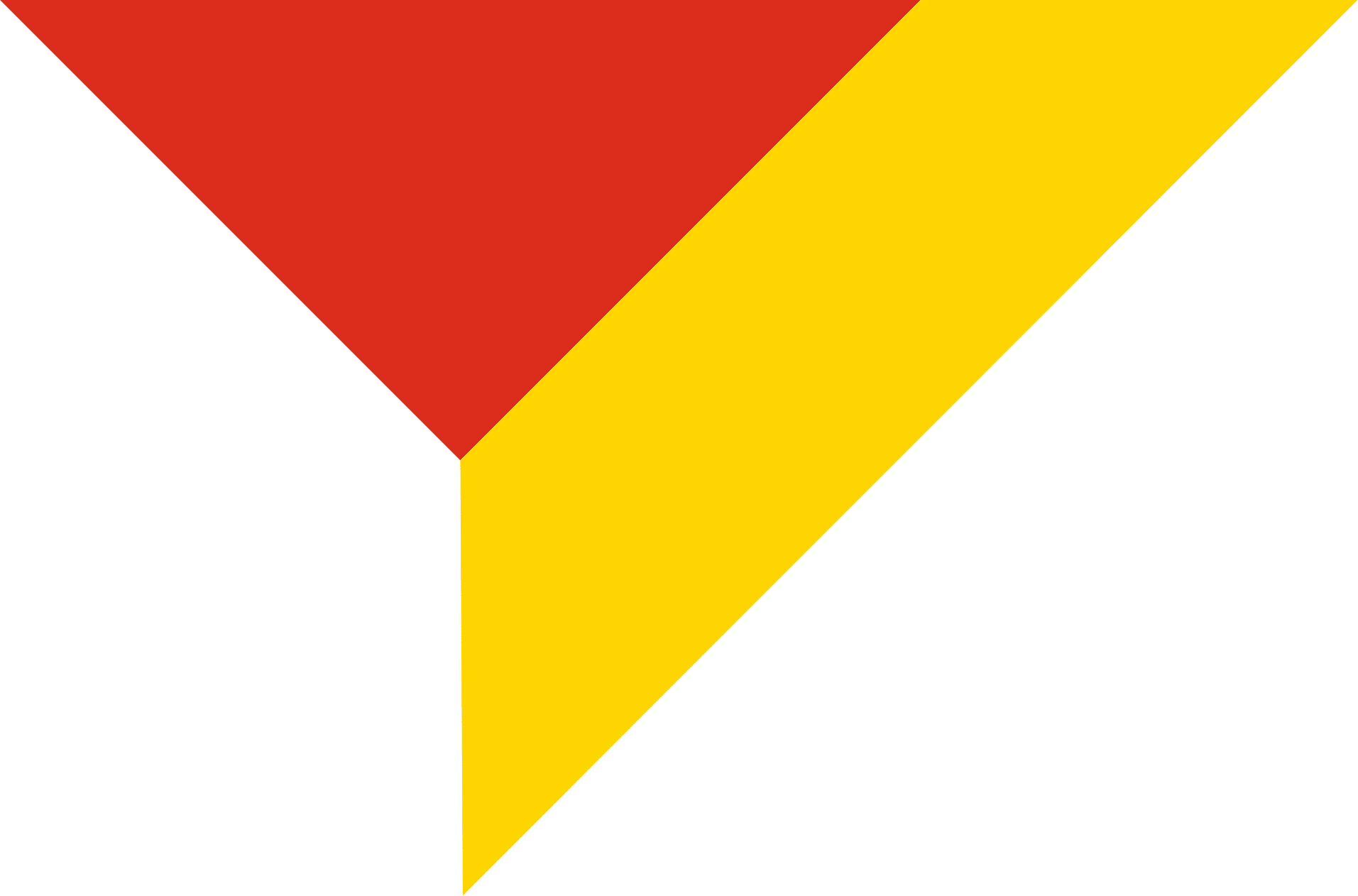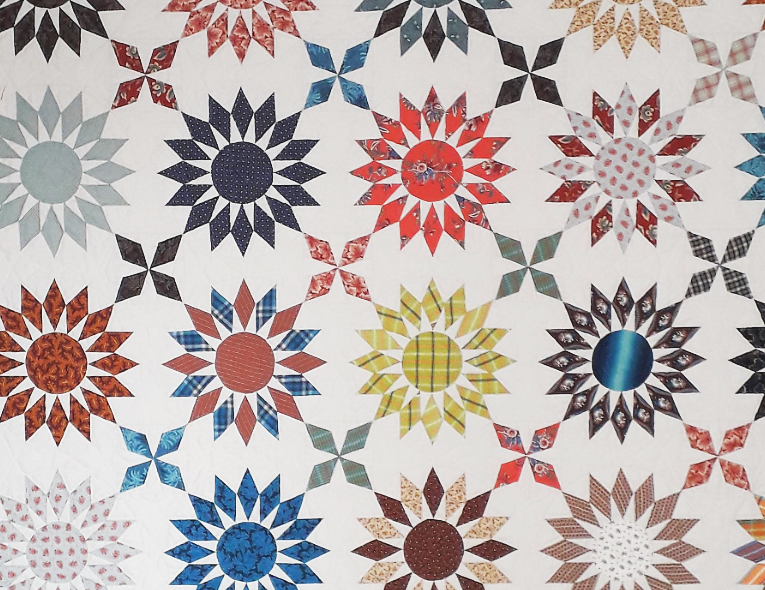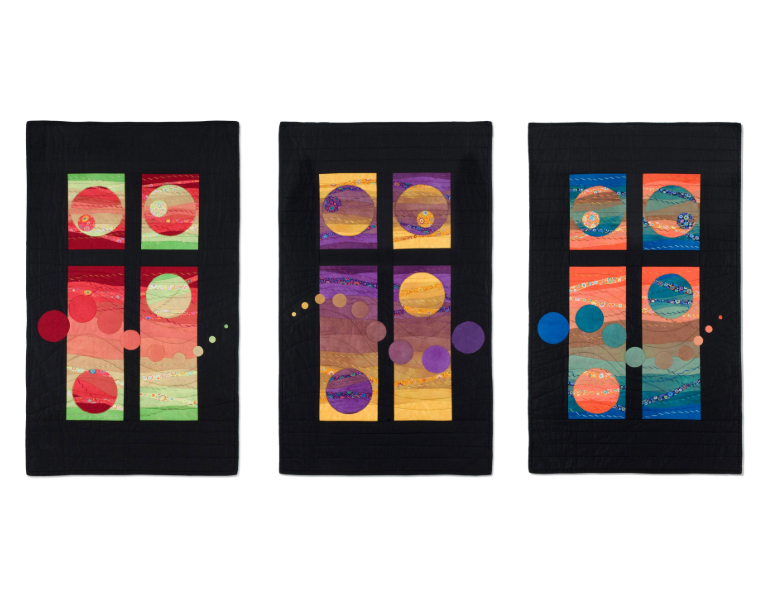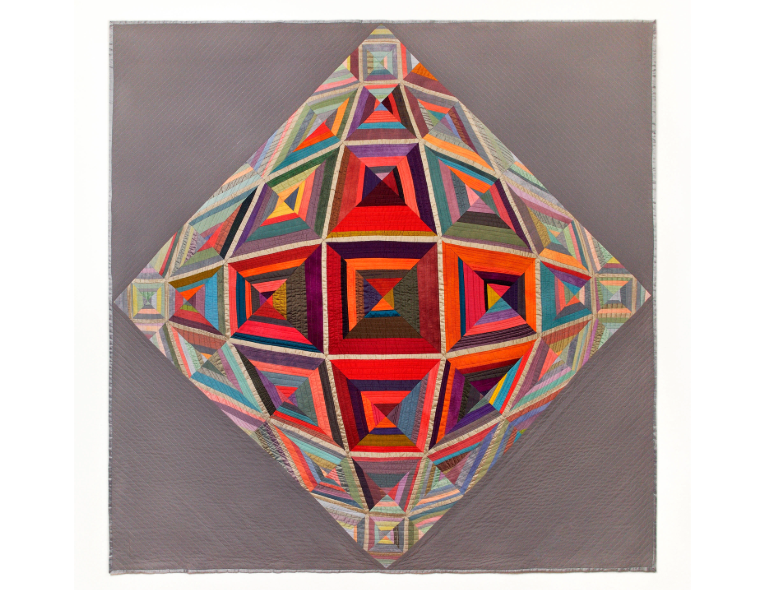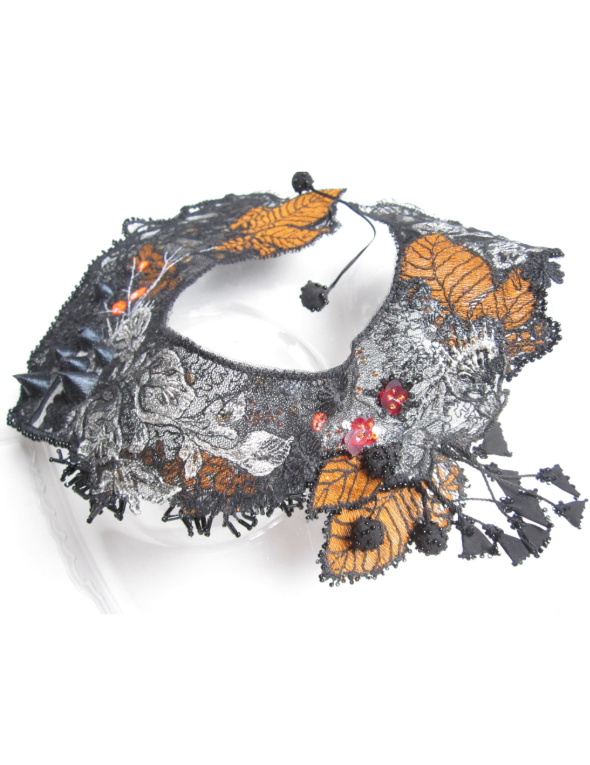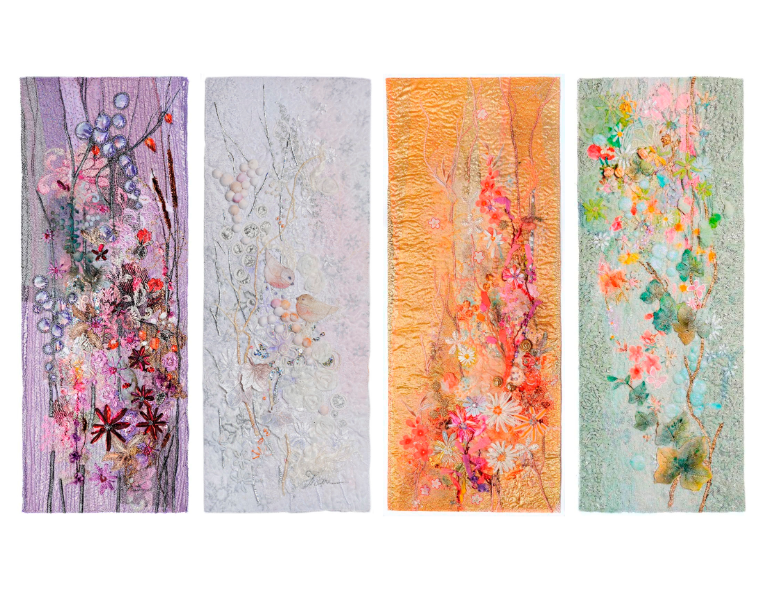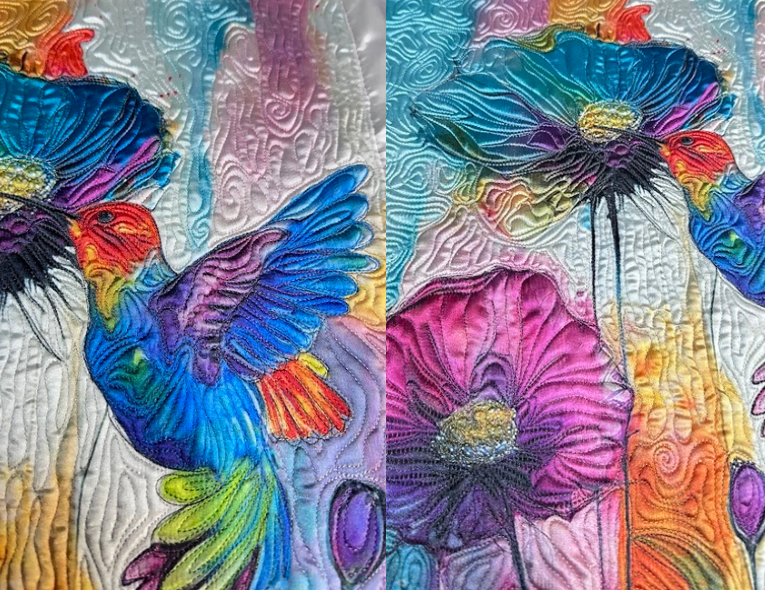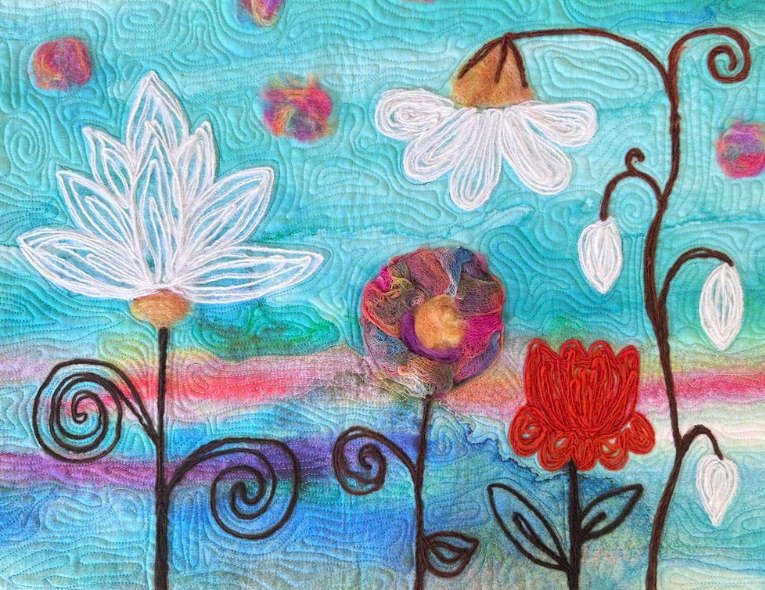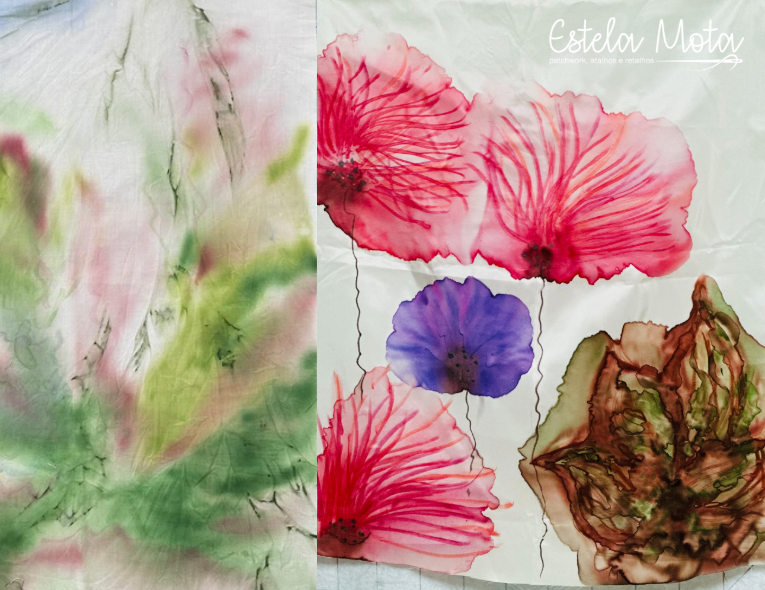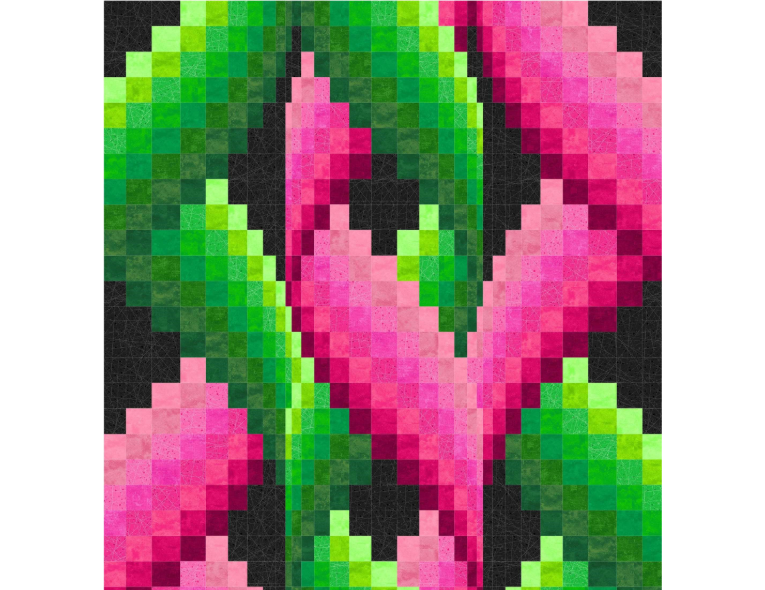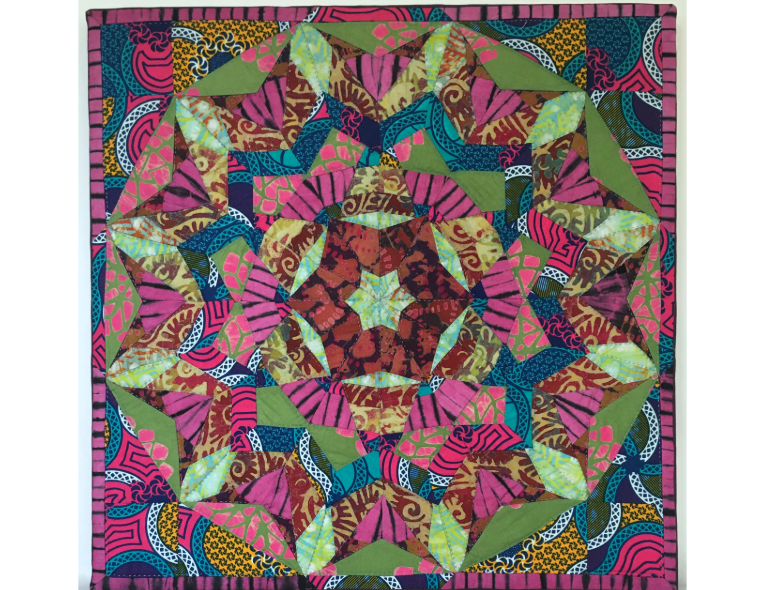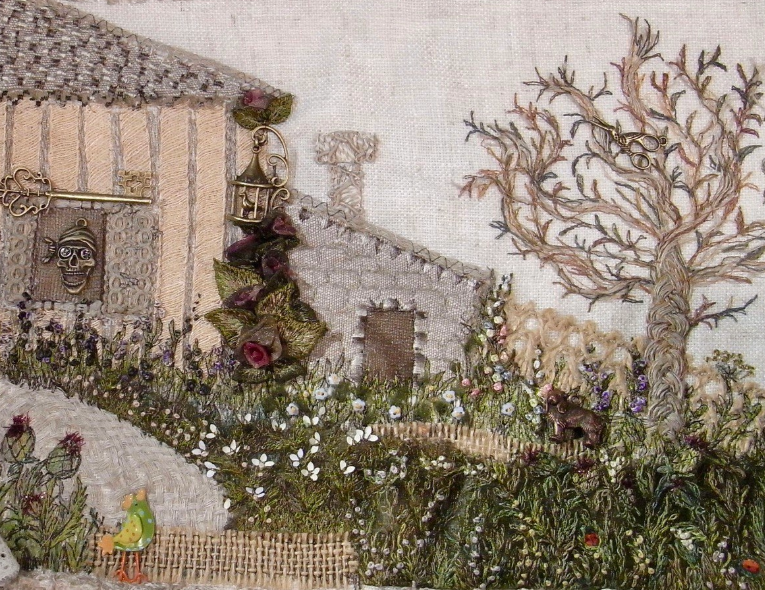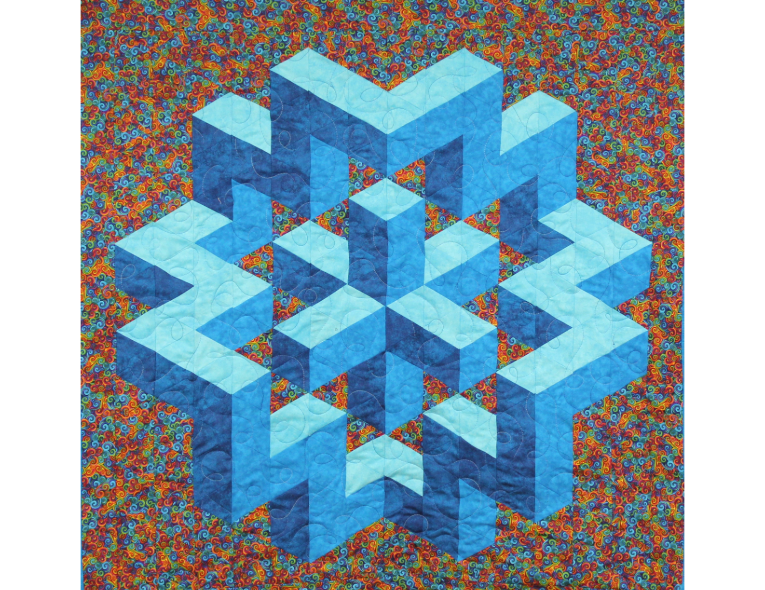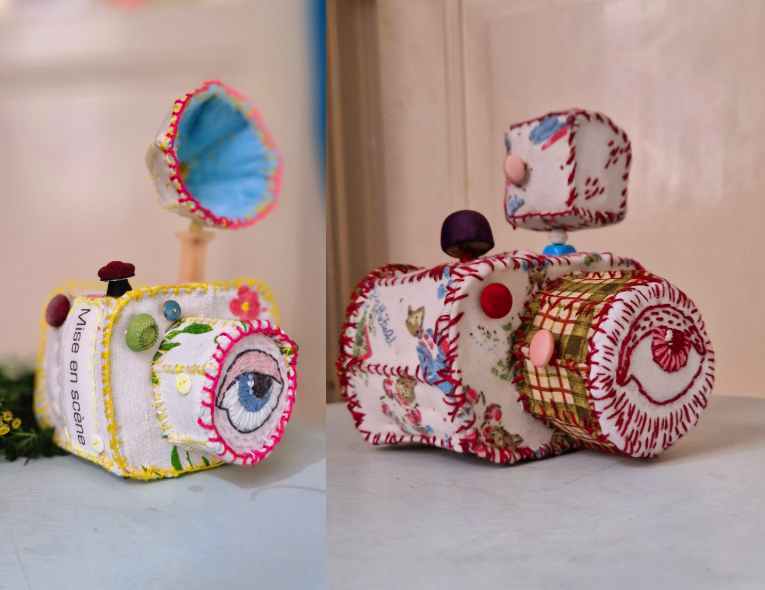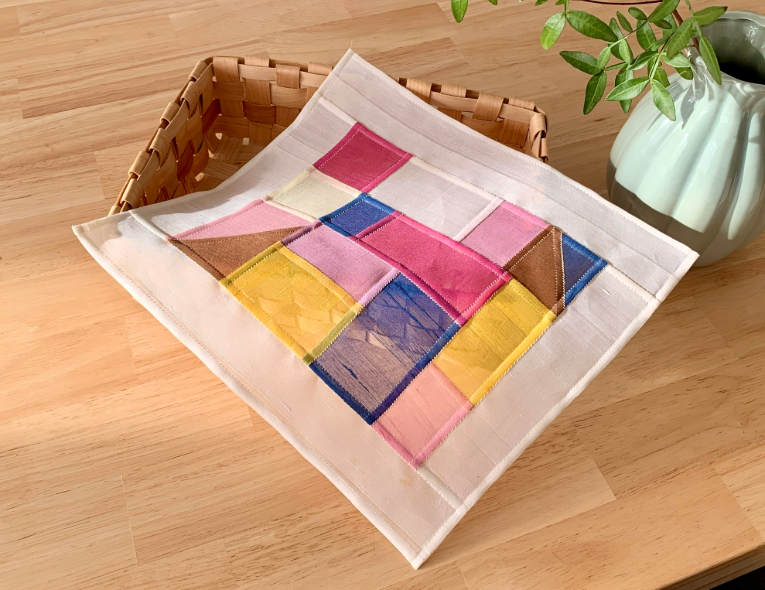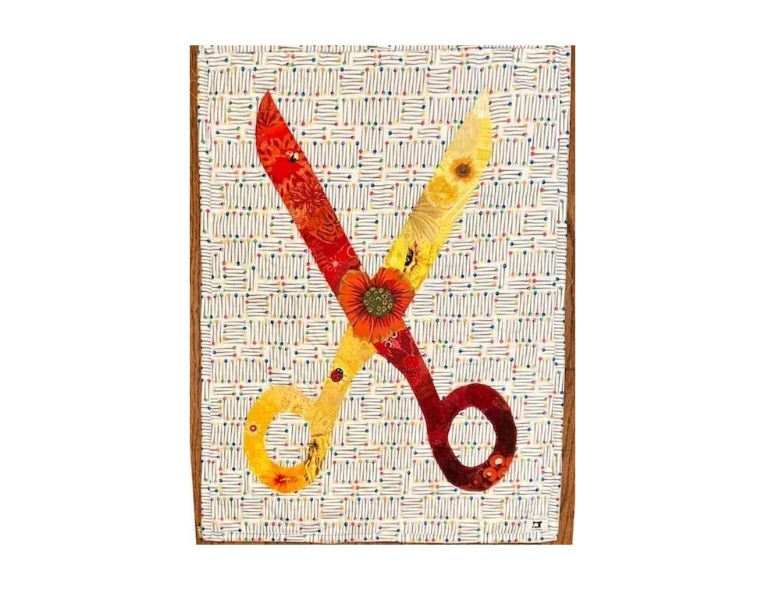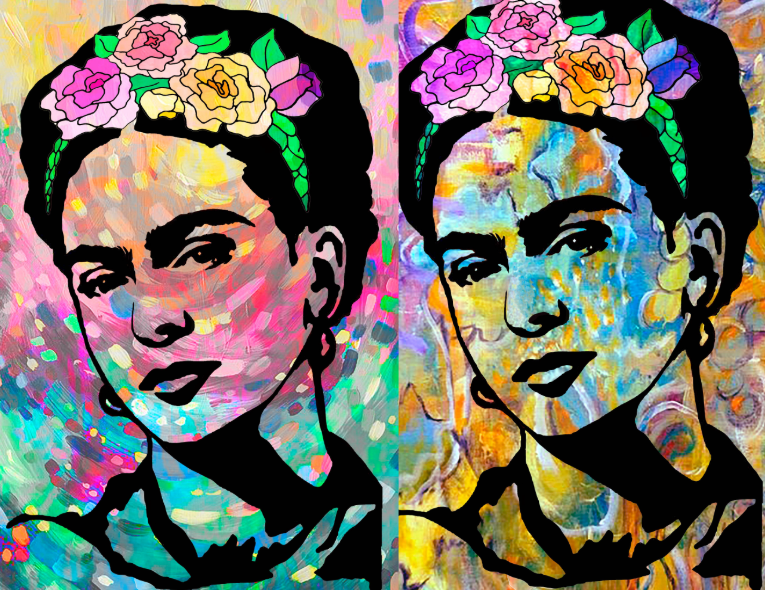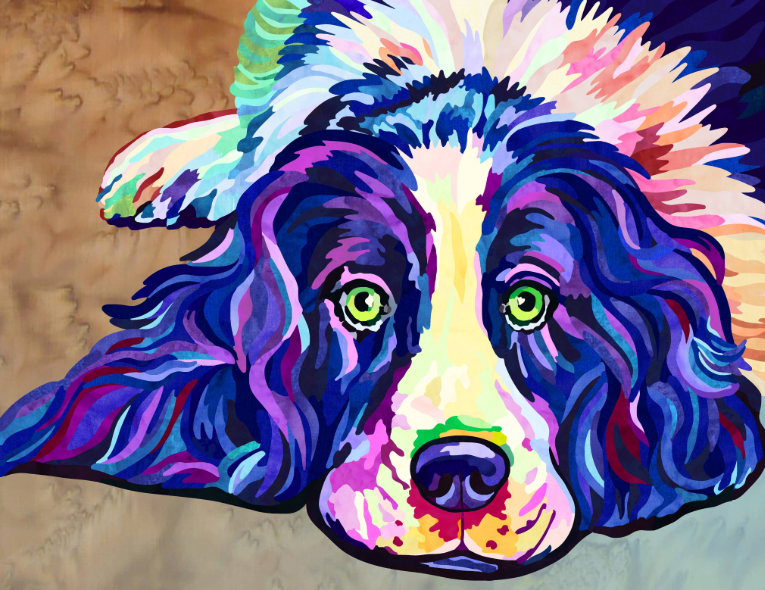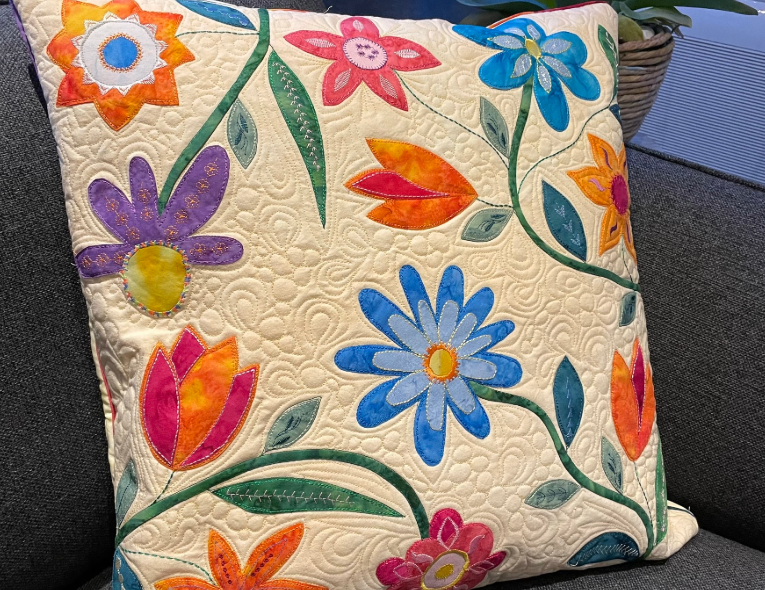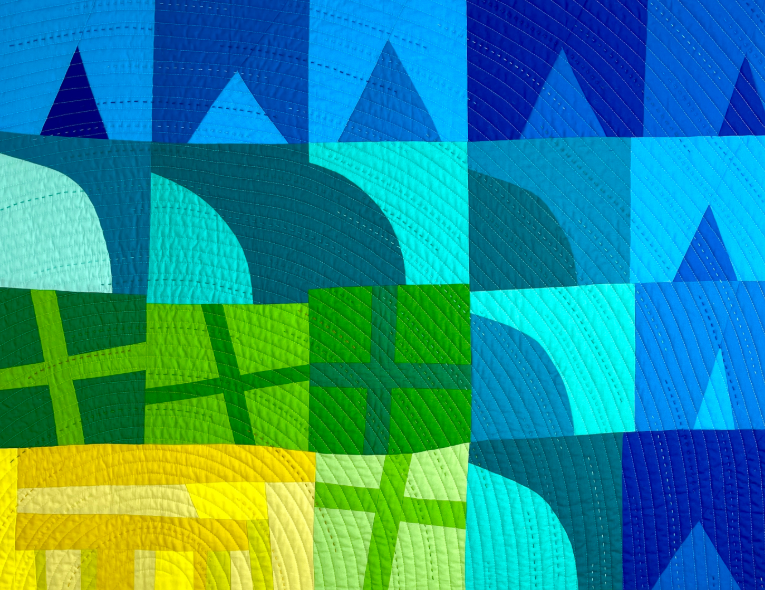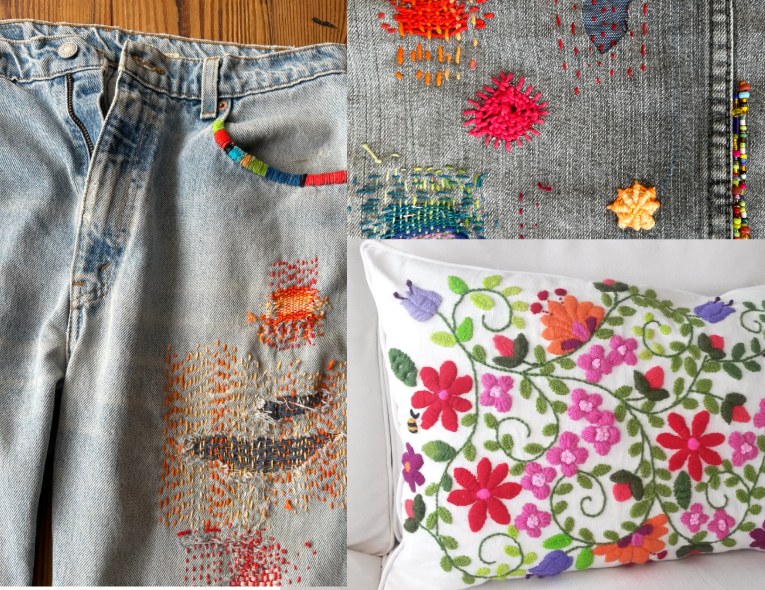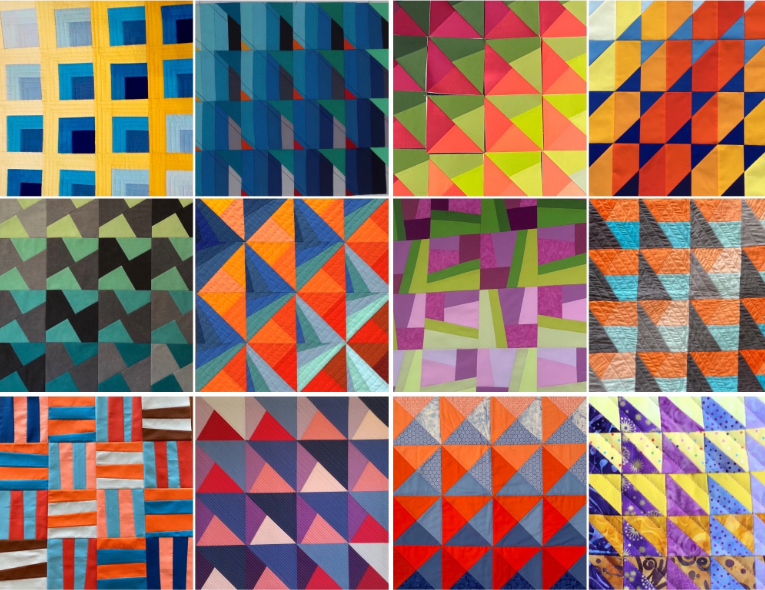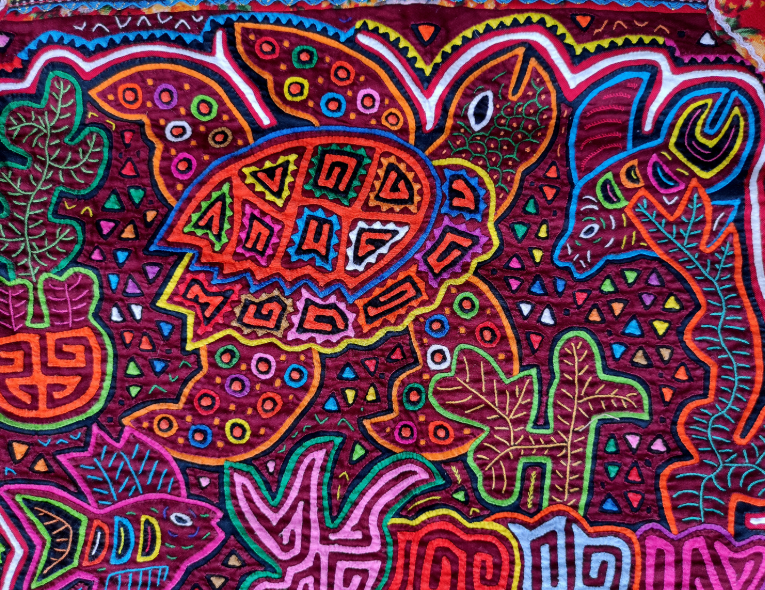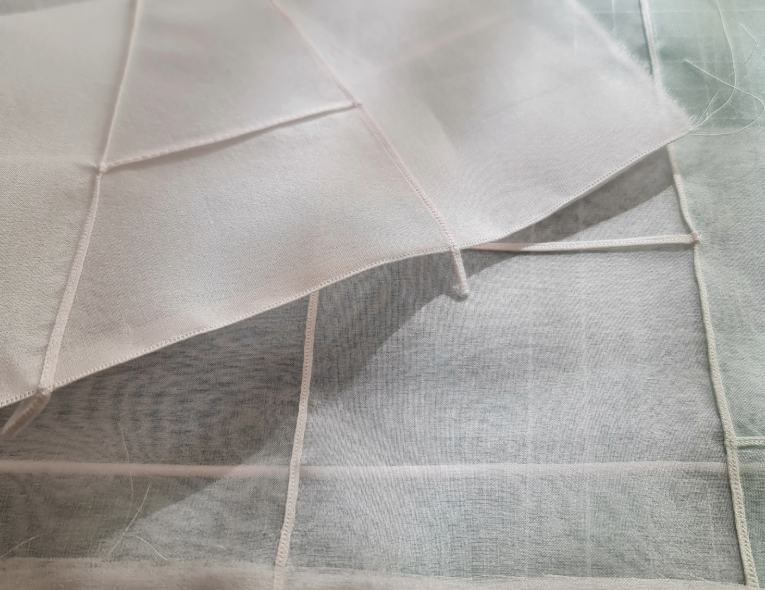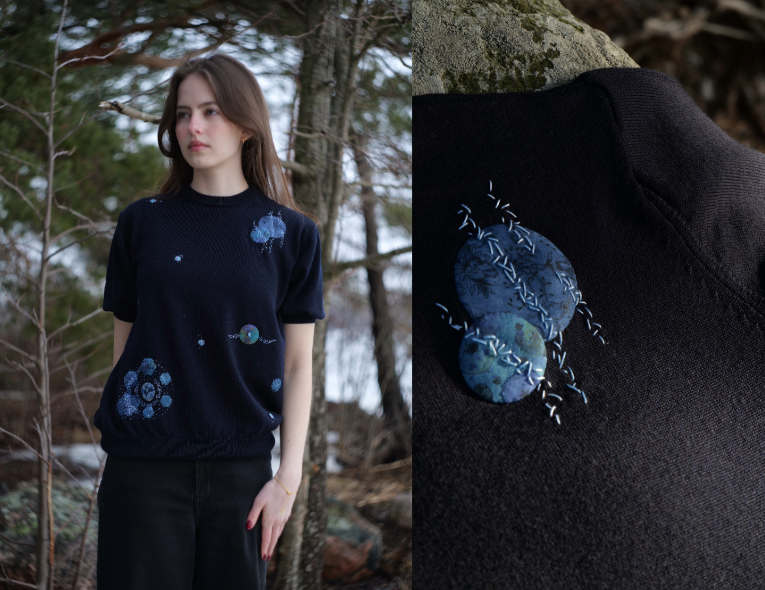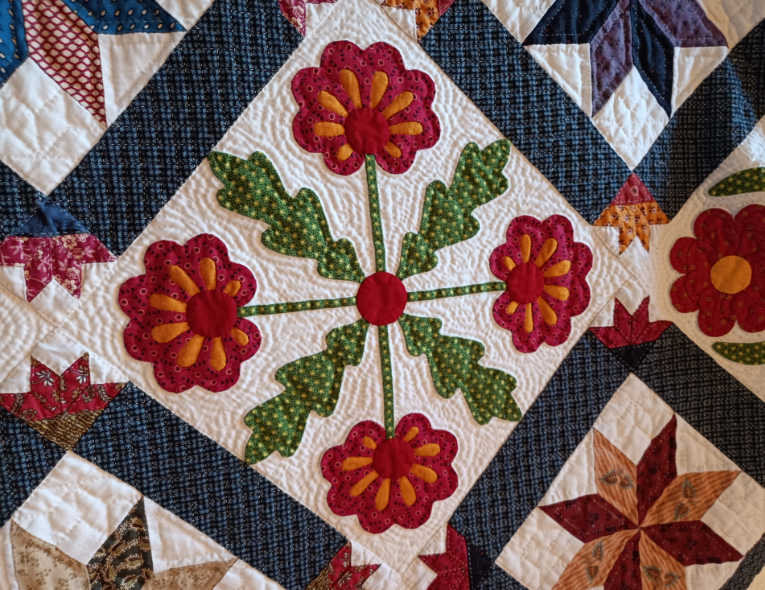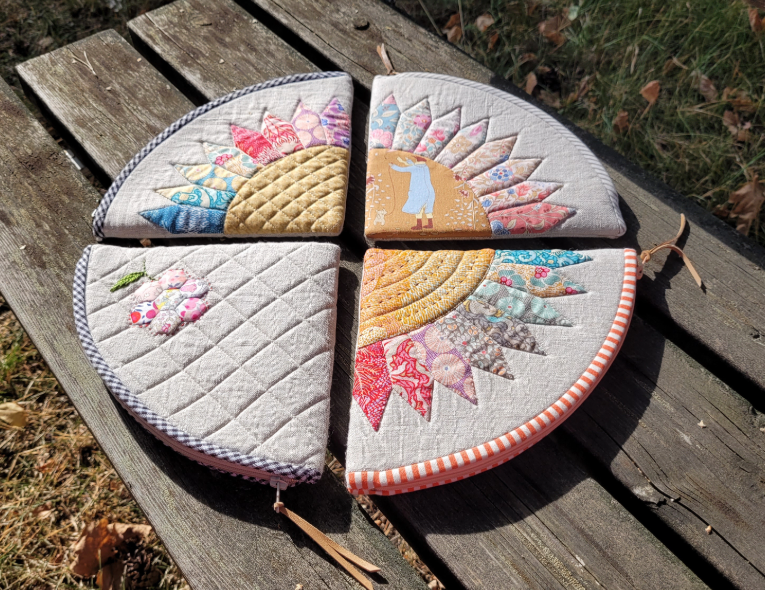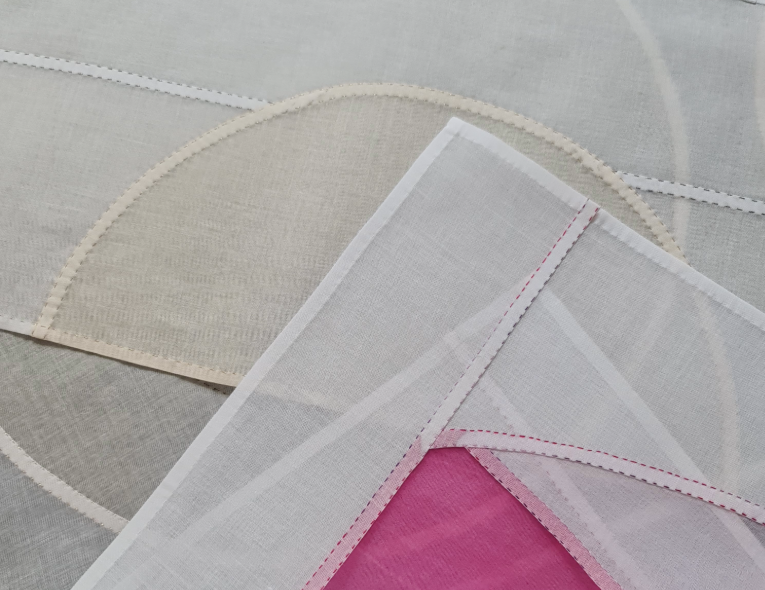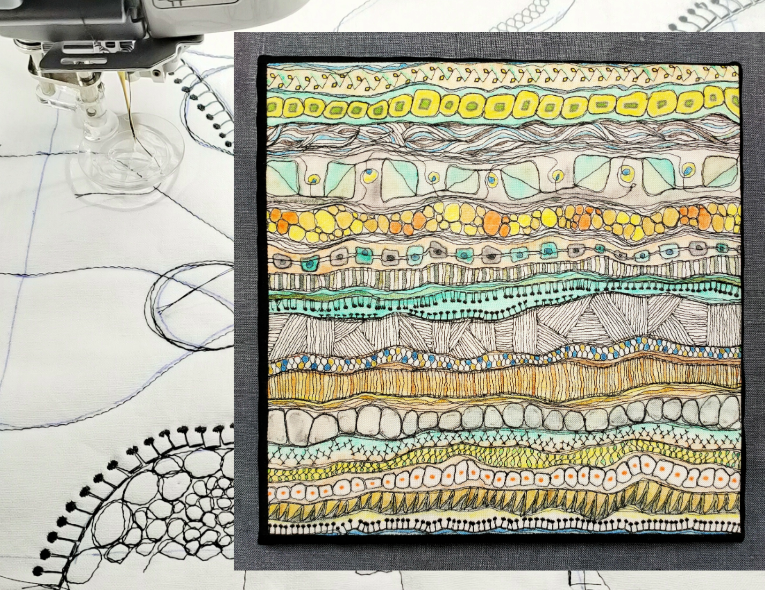You’ll learn how to reproduce a schematic that you’ll use to build your landscape. You’ll make templates for certain parts using tracing papers. Then you’ll methodically place all the village’s component parts on a textile background. Then I’ll teach you how to place everything in place while you wait to appliqué the whole thing. I’ll teach you how to appliqué stitch all these parts. This work requires a bit of meticulousness, but I’m here to guide you and help you avoid the pitfalls. I’ll also teach you lots of tricks to give certain details their guaranteed bluffing effect. Details will also be embroidered and will give the essential touch to the success of your appliqué. At the end of the day, you’re guaranteed to have work that’s built, with a few areas built up but ready for sewing. This village is a joy to make, and don’t forget that you can make new ones representing different seasons. I’ll also give you tips on how to incorporate it into various finishes.
Where: 7a route de Rombach-le-Franc 68660 Lièpvre | Salle Polyvalente 2
